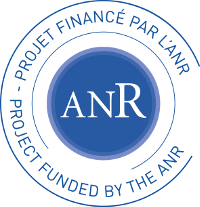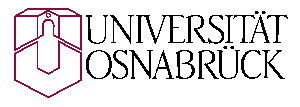REACTIVITY is a fundamental research project, in which we develop a new, untouched and challenging experimental strategy in heterogeneous model catalysis for describing reactivity related phenomena: we demonstrate that the combination of non-contact atomic force microscopy (nc-AFM) and Kelvin probe force microscopy (KPFM) can be used to quantify the adsorption/desorption characteristics of fundamental gases in heterogeneous catalysis at the single nanoparticle (NP) level as a function of NP size, shape, composition and temperature, and how properties are affected by the oxide support. Furthermore, we explicitly demonstrate that KPFM is capable of quantifying phenomena of contamination and dissolution at single NPs that is most important for many catalytic processes.
While nc-AFM is used to reveal the surface morphology determined by the size, shape, distribution and sintering of NPs, the task of KPFM is to monitor the local electronic structure determined by changes in the NP's work function (WF) providing a quantitative measure for adsorbed molecular species or dissolved atomic species in NPs. The techniques is established as calibrated standard tools in heterogeneous model catalysis involving metal NPs. Local measurements by nc-AFM and KPFM are supported by an analysis with X-ray photoelectron spectroscopy (XPS) and Ultraviolet photoelectron spectroscopy (UPS) to obtain the chemical fingerprints and average WF of the molecule-NP-surface system. Experiments are further backed by density functional theory (DFT) analysing and predicting the adsorption of reactants on NPs and related WF changes. The ultimate and challenging goal is to observe and to quantify simple reactions at single NPs, namely the oxidation of CO and the hydrogenation of hydrocarbons.
For the project, we focus on pure NPs of platinum group materials (PGMs), in particular on palladium (Pd) and gold (Au), commonly used for industrial catalytic converters. Furthermore, we consider bi-metallic NPs with the focus on Pd and Au. We optionally consider also other metals like Fe, Co or Cu. The support for the NPs will be ultra-thin and thick films of cerium oxide (ceria).
The adsorption and desorption of CO, oxygen, hydrogen and simple hydrocarbon gases (ethylene) are investigated in detail as this is relevant for the reaction to be studied and these species are known to adsorb at, e.g., PdNPs. Contamination experiments focus in particular on carbon contamination and dissolution, phenomena most relevant for many catalytic reactions like the hydrogenation of hydrocarbons, Fischer-Tropsch process and in the synthesis of carbon structures like graphene or nanotubes.
REACTIVITY is formed by two experimental and one external theory group:
| Marseille group (France) |
Experiment | Institute CINaM, Aix-Marseille Université, CNRS |
| Osnabrück group (Germany) | Experiment |
Universität Osnabrück |
| Göteborg group (Sweden) |
Theory |
Chalmers University of Technology |
The project is supported by the French Agence Nationale de la Recherche (ANR) and the Deutsche Forschungsgemeinschaft (DFG) (grant N° ANR-17-CE09-0045, DFG-391170465). The project is located in the category CE09 (Nanomatériaux et Nanotechnologies pour les produits du futur).
 |
 |
   |
 |
 |